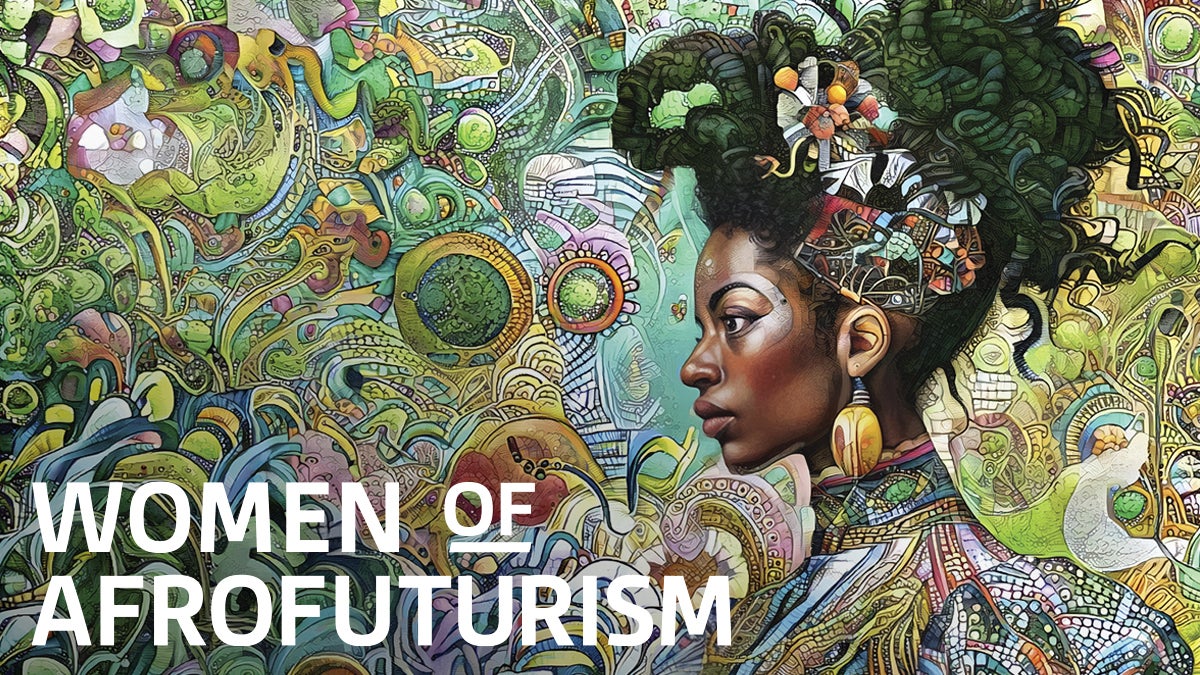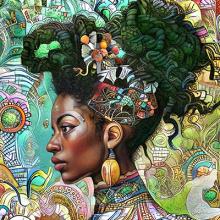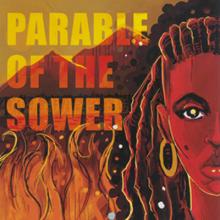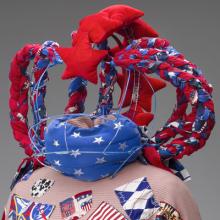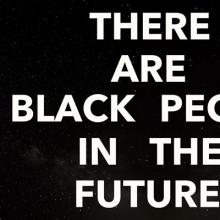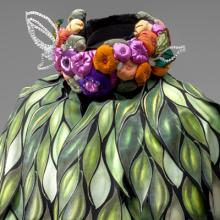Women of Afrofuturism
Women of Afrofuturism
Afrofuturism, an artistic and sociopolitical liberation movement, examines the past, questions the present, and reimagines the futures of Black people. The term was first coined in the 1993 essay “Black to the Future” by writer Mark Dery. Afrofuturism explores the Black experience through a combination of science fiction, magical realism, mythology, history, and technology in genres ranging from literature and music to fashion, film, and visual arts. Afrofuturism may incorporate a range of components—from outer space to the natural world and popular culture.
Long before the term Afrofuturism existed, visionary Black women served as spearheads of the movement. Katherine Johnson and other Black female “computers” contributed to groundbreaking projects at NASA that helped launch rockets and astronauts into space in the 1960s. Nichelle Nichols appeared on the television series Star Trek in 1966—one of the first substantial roles for a Black woman on television. Two decades later, Mae Jemison became the first African American woman to join NASA’s astronaut training program before traveling to space in 1992.
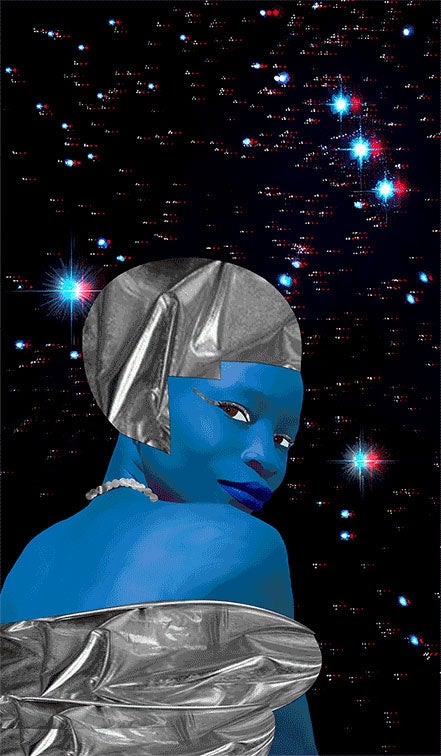 Speculative fiction, or fiction that departs from realism, such as science fiction, fantasy, and superhero narratives, has long allowed people to explore alternative realities. Octavia E. Butler, the first nationally recognized African American woman science fiction writer, published her novel Patternmaster in 1976. Butler paved the way for a host of Black women speculative fiction writers working today, such as N. K. Jemisin, who also penned the Far Sector comic starring the superhero Sojourner “Jo” Mullein. Ytasha L. Womack wrote what remains a quintessential primer on Afrofuturism in 2013, Afrofuturism: The World of Black Sci-Fi and Fantasy Culture.
Speculative fiction, or fiction that departs from realism, such as science fiction, fantasy, and superhero narratives, has long allowed people to explore alternative realities. Octavia E. Butler, the first nationally recognized African American woman science fiction writer, published her novel Patternmaster in 1976. Butler paved the way for a host of Black women speculative fiction writers working today, such as N. K. Jemisin, who also penned the Far Sector comic starring the superhero Sojourner “Jo” Mullein. Ytasha L. Womack wrote what remains a quintessential primer on Afrofuturism in 2013, Afrofuturism: The World of Black Sci-Fi and Fantasy Culture.
For decades, Black musicians have imparted Afrofuturist themes into their music. Immensely influential, experimental jazz musician Sun Ra pioneered the genre through his music, persona, album cover artwork, and futuristic costumes in the 1950s and ’60s. By the 1970s, women, such as legendary jazz musician Alice Coltrane, explored universal consciousness. Simultaneously, Labelle donned cosmic costumes and became the first all-Black female group to appear on the cover of Rolling Stone magazine in 1975. Presently, artists such as Janelle Monáe, experimental musician Moor Mother, and avant-garde flutist Nicole Mitchell continue to define the genre.
This exhibition celebrates the women of Afrofuturism who continually imagine inclusive, joyful, and luminous futures for Black people while simultaneously addressing present issues and past injustices. Artwork by Oakland-based filmmaker and artist Celia C. Peters, Boston-based digital artist Nettrice Gaskins, and interdisciplinary artist Alisha B. Wormsley, who created the THERE ARE BLACK PEOPLE IN THE FUTURE billboards, are on view alongside futuristic fashion designs by San Francisco native Afatasi the Artist and artist and professor D. Denenge Duyst-Akpem.
A very special thank you to curatorial consultant Ingrid LaFleur for her assistance with this exhibition.
Visit our Supplemental Exhibition Resources page.
@SFOMuseum
#WomenofAfrofuturism
[inset image]
The Blueprint 2024
Celia C. Peters
lenticular print
Courtesy of the artist
R2025.0212.001
© 2025 by San Francisco Airport Commission. All rights reserved.
